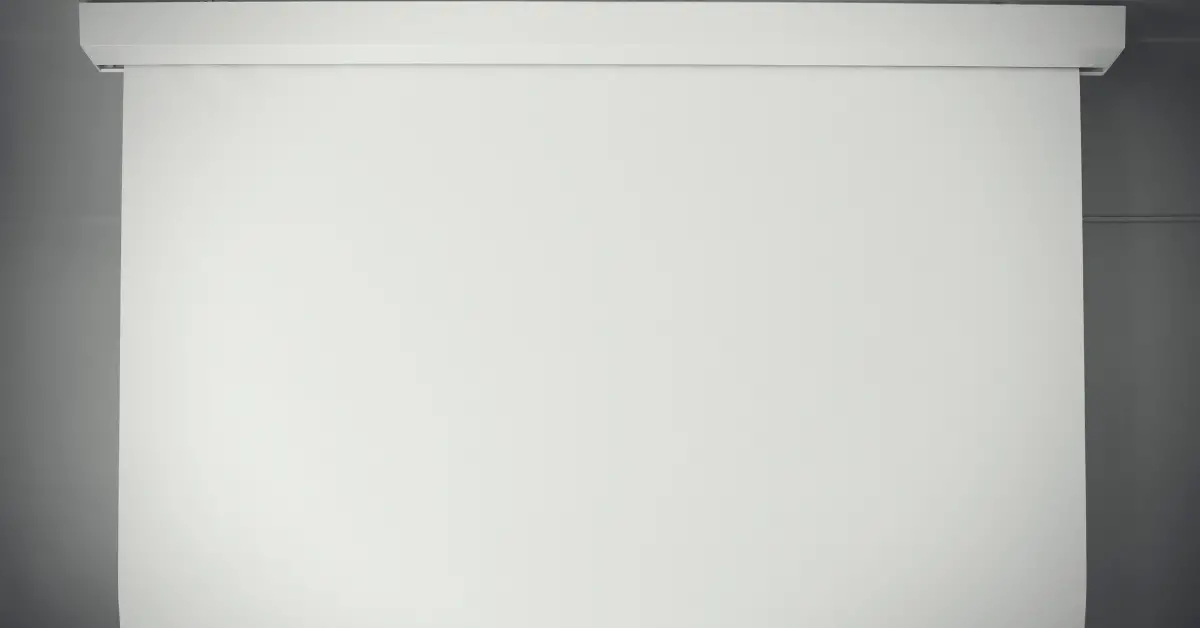When it comes to creating a home theater setup, choosing the right projector screen is essential. Two popular options for projector screens are silver screens and white screens. Silver screens are known for their high reflectivity, while white screens are more traditional and offer a brighter picture. But which one is the best choice for your home theater setup? In this article, we’ll explore the pros and cons of each option to help you make an informed decision. Whether you’re a movie buff or a casual viewer, our guide will help you choose the right projector screen for your needs. So let’s dive in and explore the differences between silver projector screens and white screens.
Table of Contents
Silver Projector Screen Vs White Screen
When it comes to choosing a projector screen for your home theater setup, there are two main options to consider: silver screens and white screens. Each option has its pros and cons, and the best choice for you will depend on your individual needs and preferences. In this article, we’ll explore the differences between silver projector screens and white screens to help you make an informed decision.
Silver Projector Screens
Silver projector screens are known for their high reflectivity, which makes them ideal for use in low-light environments. They reflect more light than traditional white screens, which means that they can produce brighter and more vibrant images. This makes them a popular choice for movie theaters and other commercial venues.
One of the main drawbacks of silver projector screens is that they can produce a “hot spot” effect. This means that the center of the screen may appear brighter than the edges, which can be distracting. Additionally, silver screens can be more expensive than white screens, which may be a consideration for those on a budget.
White Screens
White projector screens are the more traditional option, and they are still the most commonly used in home theater setups. They produce a bright and clear image, which makes them a great choice for well-lit environments. They are also more affordable than silver screens, which makes them a popular choice for those on a budget.
One of the main drawbacks of white projector screens is that they can produce less contrast than silver screens. This means that dark colors may appear less defined and less vivid. Additionally, white screens can be prone to “hot spotting” in certain lighting conditions, which can affect the overall viewing experience.
Which One is Right for You?
When it comes to choosing between a silver projector screen and a white screen, there is no clear winner. Both options have their pros and cons, and the best choice for you will depend on your individual needs and preferences. If you have a low-light environment and want a brighter and more vibrant image, a silver screen may be the best choice. If you have a well-lit environment and want a more affordable option, a white screen may be the better choice.
Is silver screen better for projector?
Whether a silver screen is better for a projector depends on the individual situation and preferences. Silver screens are known for their high reflectivity, which makes them ideal for use in low-light environments. They reflect more light than traditional white screens, which means that they can produce brighter and more vibrant images. This makes them a popular choice for movie theaters and other commercial venues.
One of the main advantages of a silver screen is that it can produce a brighter and more vivid image than a white screen. This is because the silver coating on the screen reflects more light back to the viewer, which enhances the color saturation and contrast. This makes it an excellent choice for use in environments with low ambient light levels.
However, there are also some potential drawbacks to using a silver screen. One of the main drawbacks is that they can produce a “hot spot” effect. This means that the center of the screen may appear brighter than the edges, which can be distracting. Additionally, silver screens can be more expensive than white screens, which may be a consideration for those on a budget.
Ultimately, whether a silver screen is better for a projector depends on the specific situation and preferences of the viewer. If the viewing environment is relatively dark and the goal is to achieve a bright, vivid image, a silver screen may be a better choice. However, in a well-lit environment, a white screen may be a better choice because it can produce a bright and clear image without the “hot spot” effect.
In conclusion, while a silver screen can produce a brighter and more vivid image in certain circumstances, whether it is better for a projector ultimately depends on the specific needs and preferences of the viewer. It’s important to consider the viewing environment, budget, and personal preferences when choosing a projector screen.
Conclusion
In conclusion, choosing the right projector screen for your home theater setup is an important decision. By considering the differences between silver projector screens and white screens, you can make an informed decision and choose the option that’s right for you. Whether you choose a silver screen or a white screen, you can enjoy a high-quality viewing experience in the comfort of your own home.

